The Vital Role of Thorough Food Quality Testing Always Protects Your Brand’s Reputation
Insecurity of food and agriculture products
Food security is a complex issue linked to various global challenges. Climate change, manifesting as global warming, is a significant threat, leading to unpredictable weather patterns, droughts, and floods, all of which damage agricultural productivity. This environmental crisis is intensified by geopolitical tensions disrupt food supply chains, causing price spikes and shortages. Additionally, low production due to resource depletion, such as soil degradation and water scarcity, further pressures on the food supply which make scope for adulteration. Thus, adulteration and reduced nutritional quality of food also pose health risks which is a serious food insecurity.
As a result, ensuring food security for all requires a concerted effort to address climate change, promote sustainable agricultural practices, ensure fair trade policies, and maintain political stability. However, our main focus to maintain the intentionally adulterant and contaminant free product supply in the market. Consequently, food testing laboratory and country’s regulatory agencies have great responsible job for how could make secure consumer health irrespective to nation and international boundaries. There are several food regulatory agencies to hard monitoring and policy making for whole process auditable of farm to fork for food quality, but without transparency in food testing laboratory is all process just like elephant teeth.
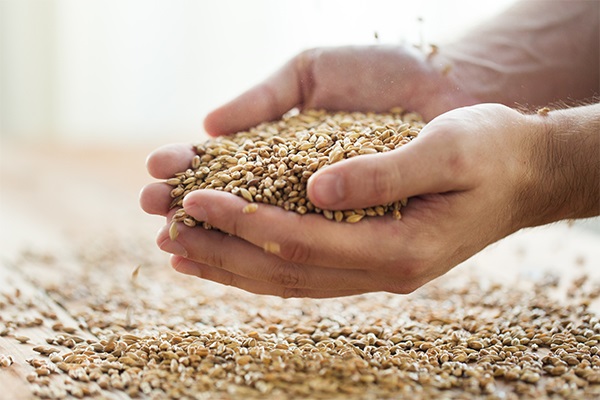
Before export, your food and spices need to be thoroughly tested; otherwise, you may face significant compensation
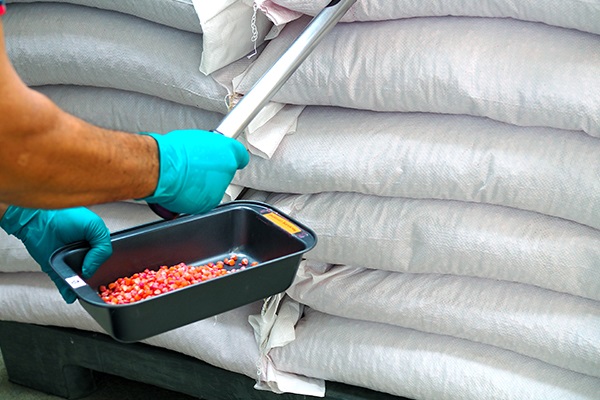
Before exporting food and spices, they must be rigorously inspected to avoid severe financial losses and legal consequences. Testing guarantees that products fulfill international safety and quality requirements, avoiding contamination, adulteration, and the presence of hazardous substances. Pesticides, heavy metals, microbiological contaminants, and allergies are all checked during comprehensive testing. Failure to meet these criteria can lead to rejected shipments, costly recalls, and reputational damage. Furthermore, firms may face significant fines and compensation claims from affected customers or governments.
As a result, investing in stringent testing procedures protects not just customers, but also the exporting company from potential legal and financial implications. Proper testing shows a commitment to quality and safety, fostering trust and long-term relationships with global partners and customers; otherwise, you could be faced with past incidents such as melamine adulterant in Chinese milk powder or recently recalled Ethylene oxide (ETO)-contaminated species and condiments.
The Top 10 Parameters to Ensure for export gateway of the world market
Food quality is a complex phenomenon that requires thorough attention from farm to fork state, with many checkpoints in place to closely monitor all systems. The testing parameters are created based on the classification of food and agriculture products, food commodities, and the food matrix. Food quality control is an essential component of the food industry, ensuring that goods are safe, consistent, and match regulatory and consumer expectations. Before purchasing or exporting items, it is critical to understand the following food quality parameters, as listed here
1. Good Agriculture Practices

Good Agricultural Practices (GAP) are critical for ensuring high-quality standards in food and agricultural goods doomed for export. These practices apply throughout the agricultural process, including pre-harvest, harvest, and post-harvest operations, as well as storage. Pre-harvest methods concentrate on soil management, water use, and insect control to ensure that crops grow in the best possible conditions. Crop rotation, organic fertilizers, and efficient irrigation systems can all help improve soil health and water conservation.
Proper pest treatment reduces the danger of contamination and results in better food. During the harvest phase, GAP requires employing proper procedures and equipment to minimize crop damage. This guarantees that fruits, vegetables, and other food are selected at the appropriate time and handled with care to preserve their freshness and safety.
Post-harvest measures are critical for maintaining the quality of agricultural goods. This includes adequate washing, sorting, and packaging to avoid spoiling and contamination. Effective post-harvest handling also includes maintaining proper temperature and humidity levels during storage and transit to extend shelf life and guarantee products arrive in the best possible shape.
Implementing GAP at each stage ensures that agricultural products meet international standards, increasing their competitiveness in global marketplaces. By following these standards, companies may ensure the safety, quality, and traceability of their exports, thereby increasing customer trust and market potential.
2. Microbiological Quality
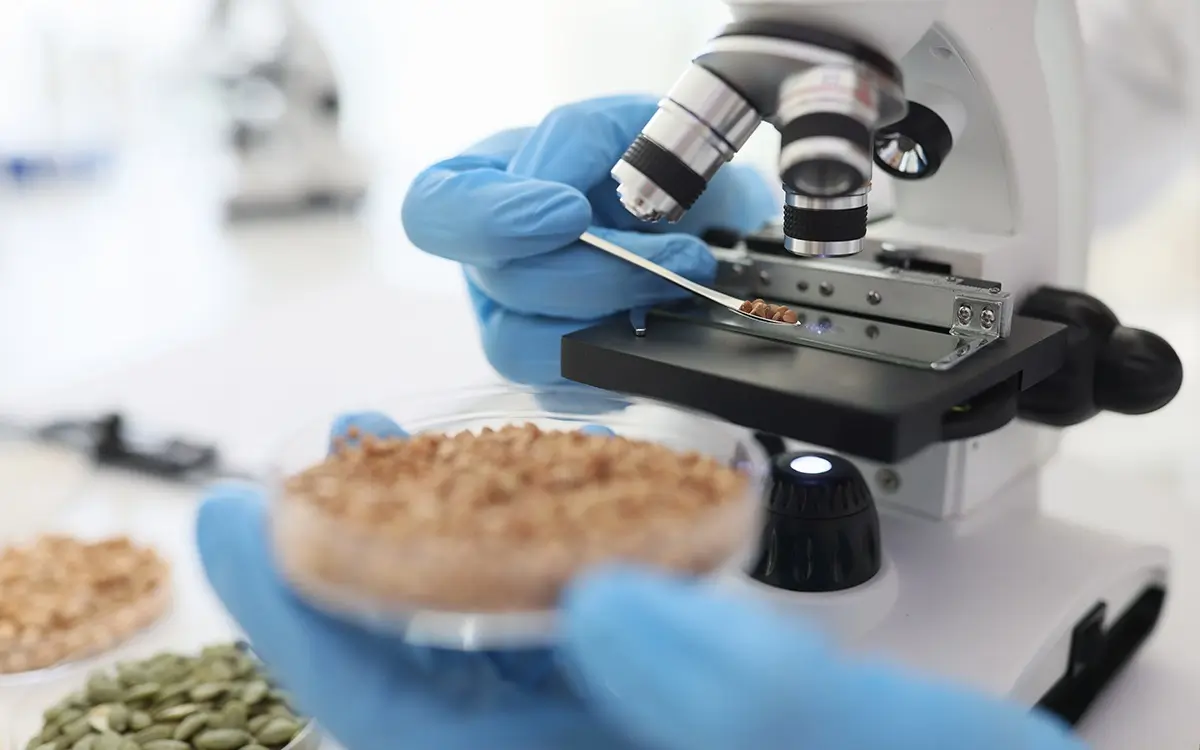
- Pathogens: Testing for harmful bacteria, viruses, and parasites that can cause foodborne illnesses (e.g., Salmonella, E. coli, Listeria).
- Spoilage Organisms: Monitoring microorganisms that can spoil food and reduce shelf life (e.g., molds, yeasts, and non-pathogenic bacteria).
3. Chemical Quality

- Contaminants: Ensure the absence of harmful chemicals like pesticides, heavy metals, mycotoxins, and industrial pollutants through rigorous testing.
- Additives and Preservatives: Verify that food additives and preservatives adhere to legal limits and are safe for consumption.
- Nutritional Content: Confirm that key nutrients (e.g., vitamins, minerals, proteins, fats, carbohydrates) align with label claims.
- ETO Analysis: Utilize gas chromatography (GC) and headspace gas chromatography (HS-GC) to detect and quantify ethylene oxide (ETO) residues in spices, herbs, dried fruits, nuts, and medical equipment. Compliance with FDA and EFSA regulations ensures consumer safety and product quality.
- Proximate Analysis: Determine the basic nutritional composition of food through quantification of moisture, ash, crude protein, crude fat, crude fibre, and carbohydrates.
- Amino Acid Profiling: Assess individual amino acids in protein or dietary samples to determine nutritional value, aid in meal development, and comply with labeling standards.
- Food Colour Testing: Verify the safety and compliance of natural and synthetic food colors such as caramel, cochineal, curcumin, brilliant blue, and tartrazine, ensuring visual appeal and meeting regulatory standards.
4. Physical Quality
- Texture and Consistency: Evaluating the physical properties of food to ensure it meets desired standards (e.g., crispiness of snacks, tenderness of meat).
- Appearance: Inspecting colour, shape, and size to ensure uniformity and consumer appeal.
- Foreign Objects: Detecting and preventing physical contaminants such as metal, glass, plastic, or other extraneous materials.
5. Sensory Quality

- Taste: Conducting taste tests to ensure the product meets flavour expectations and preferences.
- Smell: Assessing aroma to detect any off odours that might indicate spoilage or contamination.
- Mouthfeel: Evaluating the tactile sensation of food in the mouth, which can affect consumer satisfaction.
6. Allergen Control
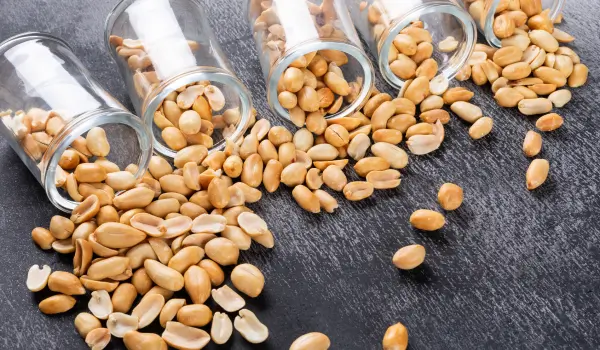
Allergen control is paramount in pre-export quality testing for food products. Rigorous measures must be implemented to detect and manage allergenic substances, ensuring the safety of consumers worldwide. This involves meticulous scrutiny of ingredients, production processes, and cross-contamination risks to prevent allergen exposure. Robust testing protocols, including ELISA assays and DNA-based methods, are employed to accurately identify allergens like gluten, peanuts, tree nuts, milk, eggs, soy, fish, and shellfish. Compliance with international regulations such as the EU’s Food Information for Consumers Regulation (EU FIC) and the FDA’s Food Allergen Labeling and Consumer Protection Act (FALCPA) is essential. Effective allergen control safeguards public health and maintains the integrity of food exports.
7. Packaging Quality
- Integrity: Ensuring that packaging is intact, properly sealed, and protective against contamination.
- Labeling: Verifying that food labels provide accurate information regarding ingredients, nutritional content, expiration dates, and storage instructions.
8. Traceability
Traceability is a critical component of quality testing prior to exporting food products. It involves establishing and maintaining a systematic record of every step in the production, processing, and distribution chain. This ensures that the origin and journey of each product can be accurately traced, enabling swift identification and resolution of any issues that may arise. Utilizing advanced technologies such as blockchain, barcoding, and RFID tagging, companies can achieve granular traceability, enhancing transparency and accountability. By adhering to traceability standards set by regulatory bodies and industry associations, exporters can instill confidence in consumers and stakeholders alike, bolstering the reputation and integrity of their products on the global market.
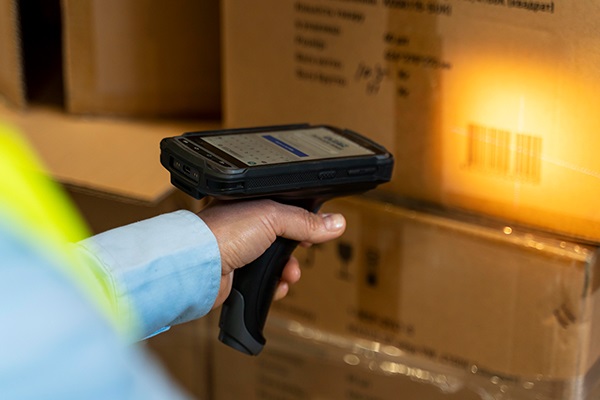
9. Process Control
HACCP (Hazard Analysis Critical Control Points): Identifying and regulating possible hazards in the manufacturing process in order to avoid contamination and assure safety. GMP (Good Manufacturing Practices) refers to following criteria to ensure that products are regularly produced and controlled to meet quality requirements.
10. Regulatory Compliance

Regulatory compliance is paramount in quality testing before exporting any food product. It entails adherence to a myriad of local and international regulations, standards, and guidelines governing food safety, labeling, and quality. Through meticulous testing and documentation, exporters ensure that their products meet the stringent requirements set forth by regulatory bodies such as the FDA, EFSA, and Codex Alimentarius Commission. This involves comprehensive analysis for contaminants, allergens, nutritional content, and more. By prioritizing regulatory compliance, exporters not only mitigate legal risks but also uphold the trust and confidence of consumers worldwide, safeguarding public health and maintaining market access.
Elevate Your Product with Cultivator Phyto Lab’s World-Class Testing Services
Cultivator Phyto Lab is world-renowned for its excellence in food and agricultural product, and beverage testing, which is powered by cutting-edge technology. Our commitment to quality and precision ensures that our testing services adhere to the highest standards. Furthermore, we provide economy rate on bulk package testing services and making high-quality testing more affordable. This is a great opportunity to leverage our world-class knowledge. Book your first batch of samples today and experience the superiority of our testing services. Cultivator Phyto Lab takes your testing experience to the next level, combining cutting-edge technology and unsurpassed service to offer exceptional results. Don’t pass up this opportunity to collaborate with a leader in the area and assure the best for your products.
Authors

Dr. Sanjoy Gupta (Ph.D)
Senior Officer- Training and Capacity Building
Dr. Sanjoy Gupta is a seasoned researcher with 13 years of experience across plant biotechnology, health science, nutrition, phytoplankton, and botanical studies. He has conducted research at reputed institutions like CSIR IIP, BSI, NIOT, and Cultivator Natural Products. With over a dozen published articles in national/international journals and thoughtful blog contributions, Dr. Gupta’s multidisciplinary expertise advances knowledge in holistic wellness and scientific innovation.

Sandeep Sharma
General Manager at Cultivator Phytolab
Sandeep Sharma is a seasoned Quality and Laboratory Management systems professional with 19+ years of experience. Currently the General Manager at Cultivator Phyto Lab Pvt. Ltd., he has expertise in analytical science, QMS implementation, training, auditing (ISO 22000, ISO/IEC 17025), and business development. He excels in laboratory design, development, and operational excellence, and is a certified Lead Auditor and scientific writer.
Reference :
- https://epgp.inflibnet.ac.in/epgpdata/uploads/epgp_content/S000444FN/P000547/M011781/ET/1527067664Q1-FoodExportandImportPolicy.pdf
- Gossner CM, Schlundt J, Ben Embarek P, Hird S, Lo-Fo-Wong D, Beltran JJ, Teoh KN, Tritscher A. The melamine incident: implications for international food and feed safety. Environ Health Perspect. 2009 Dec;117(12):1803-8. doi: 10.1289/ehp.0900949. Epub 2009 Aug 6. PMID: 20049196; PMCID: PMC2799451.
- https://www.indianspices.com/indianspices/sites/default/files/EU%20CIRCULAR%20ETO%20AND%20ANNEX%20I_compressed-2.pdf
- https://www.indianspices.com/quality/quality-standards/guidelines-quality-improvement.html
- https://www.fao.org/4/X4489E/x4489e02.htm
- https://www.fssai.gov.in/upload/uploadfiles/files/Compendium_Food_Import_Regulations_05_06_2022.pdf
- https://www.unescap.org/sites/default/files/Facilitating%20Compliance%20to%20Food%20safety%20and%20quality%20for%20cross-border%20trade%20guide.pdf

